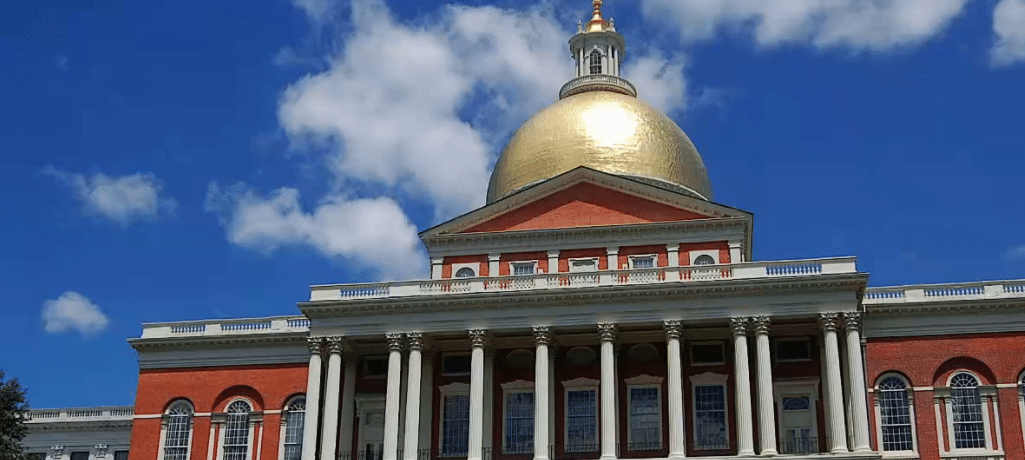A new analysis of Massachusetts solar policy by the Solar Energy Industries Association (SEIA) suggests restrictive net metering caps have stranded $78 million in solar projects in Kafkaesque limbo.
The analysis pegs the waiting list at 124 projects that, if built, would have a capacity of 51.2 MW (see the full list of projects below, starting on page 3). Berkshire County ($28.1 million), Worcester County ($12.8 million) and Hampshire County ($9.1 million) have the most stranded projects in them, and three of the state’s utilities, including National Grid, WMECO, and Unitil, have already hit their caps.
In response to the situation, legislators in the state are debating two bills that would raise the net metering caps, freeing up those projects and allowing them to be built. SEIA and Massachusetts partner organizations will testify on behalf of the bills today.
“Massachusetts has been one of our nation’s clean energy leaders, but one of its fastest-growing industries is being stifled by delayed action on net metering,” said Sean Gallagher, SEIA’s vice president of state affairs. “With projects now on hold in more than half the state, the legislature should raise the net metering caps this year. Doing so will ensure significant investment in the Commonwealth, create new jobs, protect thousands more, and help meet the Governor’s clean energy goals.”
The problem with the current policy is it limits the percentage of utilities’ total distribution that can use net metering, a long-used solar incentive program which provides businesses and other end-users the ability to get credit for the electricity they generate and send to the power grid.
Currently, the caps apply to commercial, industrial, public and community solar projects, which prevents school districts, municipal buildings, and small and large businesses that want solar can’t do so once the utilities’ caps have been met
“SEIA’s study underscores the current challenge Massachusetts is facing,” said Jeff Cramer, executive director of the Coalition for Community Solar Access. “There is tremendous customer interest in solar, sparked in large part by strong community solar offerings that are expanding solar access in the Commonwealth. But the community solar industry can’t meet customer demand, nor can we hire more workers or pay more local property taxes, until net metering caps are addressed.”
Solar advocacy group Vote Solar argued the solar industry in the state is leading the nation toward a clean-energy future and that its progress should not be stopped
“As Washington abdicates its responsibility to lead on energy and the environment, the Commonwealth must redouble its efforts,” said Sean Garren, Northeast senior director at Vote Solar. “We urge Massachusetts lawmakers to keep these 15,000 solar workers on the job delivering that brighter tomorrow. It is time to remove the caps on solar net metering and keep us on track.”
SEIA, on behalf of its more than 45 member companies in Massachusetts, is asking legislators to raise the statewide net metering cap by 5% for public and private projects, the same level proposed in the bills S. 1824/H. 2712.
The association predicts those cap increases, combined with the state’s solar incentive program, SMART, would help solar companies install more than 1 GWof solar by 2022, helping Governor Charlie Baker meet his aggressive goal of doubling Massachusetts’ solar market, which today ranks sixth in the nation with 1.7 GW of installed solar capacity.
This content is protected by copyright and may not be reused. If you want to cooperate with us and would like to reuse some of our content, please contact: editors@pv-magazine.com.








By submitting this form you agree to pv magazine using your data for the purposes of publishing your comment.
Your personal data will only be disclosed or otherwise transmitted to third parties for the purposes of spam filtering or if this is necessary for technical maintenance of the website. Any other transfer to third parties will not take place unless this is justified on the basis of applicable data protection regulations or if pv magazine is legally obliged to do so.
You may revoke this consent at any time with effect for the future, in which case your personal data will be deleted immediately. Otherwise, your data will be deleted if pv magazine has processed your request or the purpose of data storage is fulfilled.
Further information on data privacy can be found in our Data Protection Policy.